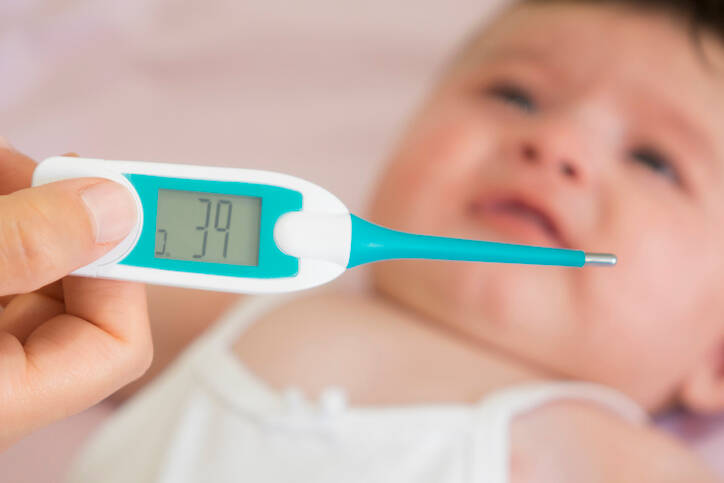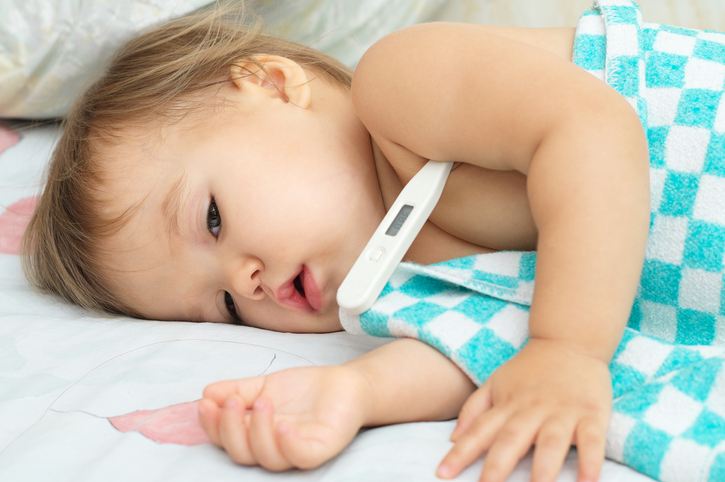- pediatriepropraxi.cz - treatment of fever in children
- solen.sk - fever and fever of unknown origin
The wrap will effectively help reduce fever. Do you know how to do it correctly?

A fever, especially in children, can be a real worry for parents. A fever is not a disease in itself, but a symptom. But if it crosses certain thresholds, it is good to know how to deal with it. Wraps are a proven help. But there are certain rules to follow.
Article content
Interesting information can also be found in the article on temperature.
When is temperature already dangerous?
If the body temperature exceeds 38.5 °C or approaches 40 °C, it has a negative effect on the body. It is particularly stressful for the cardiovascular and nervous systems. There is a risk of unconsciousness or febrile convulsions.
The mechanism of febrile convulsions is not yet fully understood. They are twitches of the muscles and limbs, accompanied by a disturbance of consciousness. A slight bluing of the skin is often seen, which is due to a transient impairment of breathing.
Most often it occurs with a sharp rise in temperature. These convulsions leave no neurological disturbances and usually subside without sequelae.
Body temperature values
| Value in degrees Celsius | Technical name | Description |
| 35,9-36,9 | normothermia | normal body temperature |
| 37-38 | subfebrile | elevated body temperature |
| 38,1-40 | febrile | fever |
| 40-42 | overheating of the organism | hyperpyrexia |
The temperature of children under two years of age is most accurately measured in the rectum. However, be sure to subtract 0.5 degrees Celsius from the reading.
If the temperature exceeds 38.5 degrees Celsius, or if there is no time to wait for medication to take effect, you can help the sufferer by using physical methods to lower the temperature. Options include rubbing with a damp cloth, lukewarm compresses, wraps or lukewarm showers.
How to properly do wraps
Wraps are an effective way of reducing fever in children as well as adults. The principle is to evaporate water from the surface of the body, thereby cooling it down at the same time.
Prepare the following for the wraps:
- a waterproof pad or changing table
- a towel or cotton nappy or towel
- a water thermometer
How to do the wrap:
- Check the temperature in the room, it should be around 20 to 24 degrees Celsius
- put a waterproof pad on the bed
- soak the towel in water that is approximately 22 to 25 degrees and wring it out
- the cloth should be cool but not too wet
- spread the towel out on the mat so that you lay the baby on it and wrap it around the whole torso, from arms to thighs
- do not cover the baby afterwards
- the radiant heat would otherwise not be as effective
Approach the baby calmly at all times. Babies quickly sense nervousness and become restless and stressed themselves.
You can leave the wrap on for about 10-15 minutes.
Afterwards, dry the patient, dress him/her in light clothing and let him/her rest. Remember to offer fluids.
Take the temperature and repeat the wrap as necessary. However, it is not recommended to do the wrap too often. If the temperature cannot be brought down even after repeated wraps, seek medical help.
For young children, a chest wrap is often sufficient.
Such a form of lowering high temperature can be used in any febrile condition. However, there is a potential risk of cooling the body too quickly. When the skin surface suddenly cools, it reacts by so-called vasoconstriction (narrowing of blood vessels). The circulation becomes centralised, the blood supply to the peripheral parts of the body is impaired. The patient has shivering and a feeling of chills.
Never perform a wrap if the patient has cold extremities and a feeling of chill or chills.
Also, discontinue cooling if the patient has cold extremities or marbled skin.
An alternative to wraps is a short shower with lukewarm water. This is preferred, especially for older children and adults. After the shower, a quick drying and covering with a dry blanket is needed.
Another option is to take a bath in water at 29 to 32 degrees Celsius or to rub the body with a damp cloth. The whole body should be rubbed for 10 to 15 minutes. The cloth dries quickly and needs to be repeatedly soaked.
Of course, the patient's temperature should be checked repeatedly. However, care should also be taken to ensure that the room is at a suitable temperature, which should be approximately 24 degrees Celsius.

Physical lowering of the temperature is not advisable in the case of shivering or cold extremities. The temperature usually rises then. The patient feels cold and a warm environment or blanket is helpful.
What to think about with fever?
Prefer light and airy clothing. This will encourage the temperature to drop by radiating and sweating. The grandmothers' prescription, such as covering with a thick blanket and sweating, is not entirely appropriate. Smaller children in particular have not yet developed thermoregulation, so they are at risk of overheating.
Of course, bed rest and adequate fluid intake are essential. Without adequate hydration, efforts to reduce sweating and temperature through medication could be unsuccessful or even dangerous.
When to use medication?
It is not recommended to lower the temperature by using medication before the temperature crosses the 38 degrees Celsius mark.
An elevated temperature is a non-specific symptom and represents the body's defence mechanism.
When the condition already requires pharmaceutical intervention, the first choice drug is paracetamol, which can be repeated every 6 hours. It can be combined with ibuprofen on an alternate basis as needed. This is given every 8 hours at most.
Read more about the treatment of fever and fever in the magazine article on flu.

If you have a fever above 40 degrees Celsius and it does not go down even after compresses or medication, seek medical advice. Likewise if you are in any doubt.
Poultices and various other wraps
We often come across various advice, especially from the older generations. You may often hear advice about putting potatoes or other vegetables on certain parts and the whole body. However, doctors do not recommend these methods. Neither do they recommend cold compresses on the forehead or sweating under a thick blanket. All these actions are ineffective.
On the contrary, they can cause thermal shock or dangerous overheating of the organism.
Sun or heat as a cause of fever
The causes of a fever can be different. Especially in smaller children, overheating can easily occur. Young children do not yet have a sufficiently developed thermoregulation. Thus, in too warm an environment or inappropriate clothing, damage to the body can occur.
Of course, the sun and the hot summer season in particular, or travelling in a car without air conditioning, are a risk. But even in the colder months, under certain circumstances, there is a risk of this problem.
You may also be interested in this article on summer colds, where you can also learn about thermal shock or overheating.
The bottom line is that you can also manage a fever like this with the help of properly performed wraps. However, it is always important to observe the patient and especially the child after the wrap or to look for other possible causes of the temperature rise.
Postup pri zábale vo videu
Interesting resources
Related










